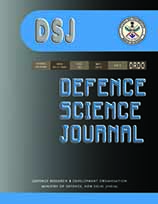Evolution of a Hybrid Model for an Effective Perimeter Security Device
DOI:
https://doi.org/10.14429/dsj.65.8573Abstract
Clustering and classification models, or hybrid models are the most widely used models that can handle the diverse nature of NIDS dataset. Dirichlet process clustering technique is a non-parametric Bayesian mixture model that considers the data distribution of the dataset for the formation of distinct clusters. The number of clusters is not known a priori and it differs across different datasets. Determining the number of clusters based on the distribution of data instances can increase the performance of the model. Naive Bayes model, a supervised learning classification technique, maintains a better computational efficiency, by reducing the training time. In this paper, we propose a hybrid model to exploit the positive aspect of proper clustering of data instances and the computational efficiency in building a NIDS. RIPPER algorithm is used to extract rules from the traffic description for updation of the rule database. Experiments were conducted in the KDD CUP’99 and SSENet-2011 datasets to study the performance of the proposed model. Also, a comparison of three hybrid methods with the proposed hybrid model was carried out. The results showed that the proposed hybrid model is superior in building a robust perimeter security device.Downloads
Published
2015-11-10
How to Cite
Selvakumar, S., & Vasudevan, A. (2015). Evolution of a Hybrid Model for an Effective Perimeter Security Device. Defence Science Journal, 65(6), 466–471. https://doi.org/10.14429/dsj.65.8573
Issue
Section
Computers & Systems Studies
License
 Where otherwise noted, the Articles on this site are licensed under Creative Commons License: CC Attribution-Noncommercial-No Derivative Works 2.5 India
Where otherwise noted, the Articles on this site are licensed under Creative Commons License: CC Attribution-Noncommercial-No Derivative Works 2.5 India


